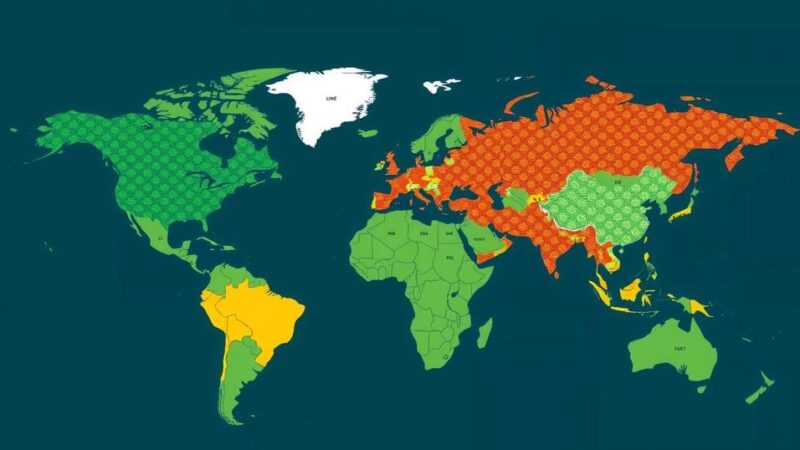An attack on the al-Asad airbase in Iraq resulted in injuries to five American servicemembers and two contractors, potentially indicating a broader escalation of conflict in the Middle East amidst rising tensions following Israel’s military actions in Gaza. While no group has claimed responsibility, the strike may be linked to Iran’s ongoing regional strategies and previous retaliatory patterns, raising concerns about the implications for U.S. interests and regional stability.
On Monday, an assault on the al-Asad airbase in Iraq resulted in injuries to at least five American military personnel and two contractors. While this incident could be perceived as isolated, it raises concerns that it may signify a broader escalation of conflict in the region. The strike coincides with a period of escalating tensions throughout the Middle East, particularly as Israel continues its military operations in Gaza. Recently, Israel has been implicated in the assassinations of prominent figures, including Hamas’s political leader, Ismail Haniyeh, as well as Hezbollah military commander Fuad Shukr, in both Iran and Lebanon. In response, Iran has blamed Israel for these actions and is anticipated to retaliate, creating uncertainty regarding the potential for a larger conflict in the region. As of now, it remains uncertain whether Iran is connected to the attack on al-Asad, and no group has yet claimed responsibility. Various Iran-affiliated factions operate within Iraq, such as the notable militia group Kataib Hezbollah. However, the relationship between these groups and Iran is not overtly direct, as they sometimes act independently of Iranian directives. Nonetheless, the events highlight the fragile nature of the current geopolitical landscape, particularly surrounding the Israel-Gaza conflict. Despite Iraqi President Mohammed Shia al-Sudani’s declaration in January regarding the intention to expel U.S. troops from Iraq, approximately 2,500 American servicemembers remain in the country primarily to support the fight against the Islamic State (ISIS). The U.S. recently directed strikes against militias known as Popular Mobilization Forces (PMFs), which have been accused of orchestrating drone attacks that pose a threat to American facilities. These PMFs, while often regarded as Iran-backed entities, possess distinct objectives diverging from Iran’s goals. These groups have maintained an operational history of rocket attacks against U.S. positions since around 2020, following the assassination of Qasem Soleimani, a high-ranking figure in the Iranian military. While Monday’s incident may be interpreted as an act of retaliation for a recent U.S. airstrike, it could also serve as part of Iran’s broader response to the aforementioned assassinations of key figures connected to Hamas and Hezbollah. Experts have highlighted the precariousness of the situation, as Iran seeks to respond in a manner that conveys strength while avoiding excessive escalation that could provoke further military action from Israel and the U.S. Colin Clarke, a senior research fellow at the Soufan Center, noted the complexities surrounding Iran’s potential response, emphasizing, “I think that’s the challenge for the Iranians, is trying to thread that needle where they respond in a way that doesn’t prove to be completely impotent and reveal them as weak, but they also don’t want to go overboard.” As tensions continue to mount, the nature of Iran’s retaliation will be critical in determining the trajectory of conflict in the region. Escalation could lead to increased casualties and a broader involvement of external actors, particularly if attacks on civilians are sustained. According to Ali Vaez, director of the Iran program at the International Crisis Group, the stakes are undeniably high if Iran’s responses are viewed as insufficiently punishing. Availing insights on this fraught landscape can aid in understanding the intricate interplay of regional powers and their implications moving forward.
The recent attack on U.S. troops stationed in Iraq at the al-Asad airbase and the resultant injuries highlight the existing volatility in the Middle East. This incident is set against a backdrop of rising tensions stemming from Israel’s ongoing military engagement in Gaza and its recent targeted killings of Hamas and Hezbollah leaders. Iran’s connections to these groups and its potential for retaliation contributes to a complex geopolitical atmosphere, with American forces still engaged in counter-terrorism operations in Iraq. The historical context of U.S.-Iran relations, particularly after the assassination of Qasem Soleimani, serves as a critical reference point for understanding the ramifications of this attack and its implications for U.S. presence in the region.
The attack on the al-Asad airbase is emblematic of the escalating tensions within the Middle East, as regional actors maneuver following recent violent events, particularly Israel’s actions against Hamas and Hezbollah. While the long-term consequences of this recent assault remain uncertain, it underscores the precariousness of the current geopolitical landscape. The responses from Iran and its allied factions will be essential in determining the trajectory of conflict and stability in the region, potentially influencing U.S. military involvement and broader regional dynamics. It is imperative to monitor these developments closely to understand the potential for further escalation and its implications on international stability.
Original Source: www.vox.com






